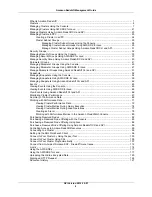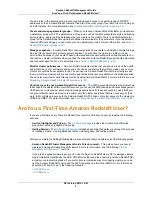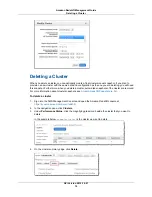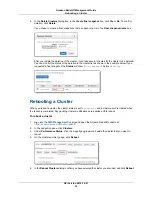
What Is Amazon Redshift?
Welcome to the Amazon Redshift Cluster Management Guide. Amazon Redshift is a fully managed,
petabyte-scale data warehouse service in the cloud. Amazon Redshift offers you fast query performance
when analyzing virtually any size data set using the same SQL-based tools and business intelligence
applications you use today. With a few clicks in the AWS Management Console, you can launch a Redshift
cluster, starting with a few hundred gigabytes of data and scaling to a petabyte or more.
Your first step in creating a data warehouse is to launch a set of compute nodes, called an Amazon
Redshift cluster. The number and type of compute nodes that you need depends on the size of your data,
the number of queries you will execute, and the query execution performance you need. Each cluster
that you provision is a fully managed Amazon Redshift data warehouse.You can use the Amazon Redshift
Management console, API, or CLI to create and manage clusters.
By default, Amazon Redshift creates one database when you create a cluster. You can create additional
databases as needed. After your cluster has been provisioned, you can upload your dataset and then
perform data analysis queries by using the SQL-based tools and business intelligence applications that
you are already familiar with. Regardless of the size of the data set, Amazon Redshift offers high query
performance.
Amazon Redshift manages all the work of setting up, operating, and scaling a data warehouse: provisioning
capacity, monitoring and backing up the cluster, and applying patches and upgrades to the Amazon
Redshift engine.You can focus on using your data to acquire new insights for your business and customers.
Cluster Management Overview
Cluster management involves the following operations:
Create and manage clusters – Depending on your data warehousing needs, you can start with a small
cluster with just a single XL node and easily scale up to 100 8XL nodes as your requirements change.
You can monitor the performance of your data warehouse, and if needed, you can add or remove compute
nodes without any interruption to the service. For more information, see
Amazon Redshift Clusters (p. 4)
.
If you intend to keep your cluster running for a year or longer, you can save money by reserving compute
nodes for a one-year or three-year period. Reserving compute nodes offers significant savings compared
to the hourly rates that you pay when you provision compute nodes on demand. For more information,
see
Purchasing Amazon Redshift Reserved Nodes (p. 82)
.
Create and manage cluster security groups – By default, any cluster that you create is closed to
everyone. To enable access to your cluster, you create a security group and associate it with your cluster.
API Version 2012-12-01
1
Amazon Redshift Management Guide
Cluster Management Overview






































